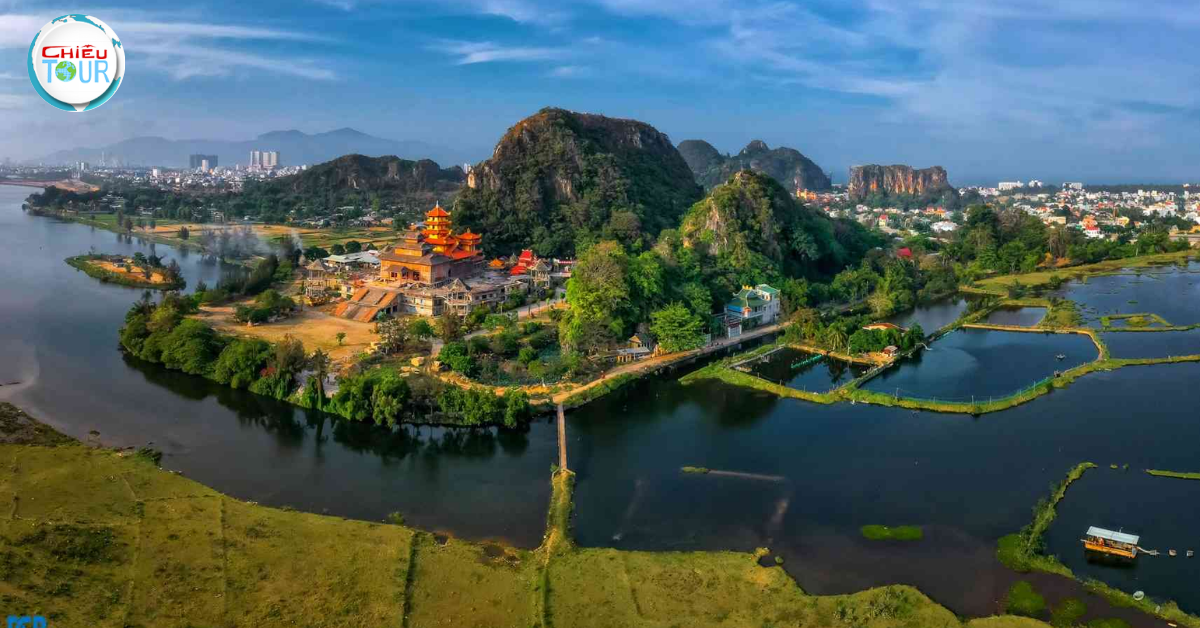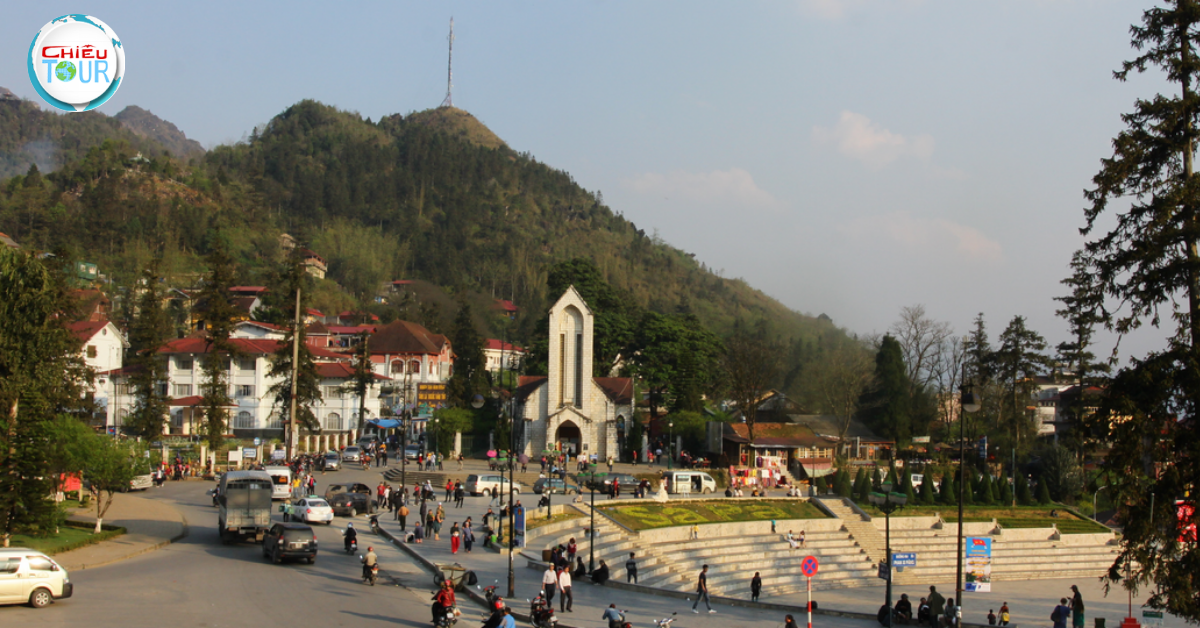Top 10 Famous Tourist Attractions in Hanoi
- Author: Admin
- | Hot destination
President Ho Chi Minh's Stilt House
Nestled within the lush greenery of the Presidential Palace complex, President Ho Chi Minh's Stilt House stands as a testament to Vietnam’s revolutionary leader’s humble beginnings and profound connection with the people. This simple yet impactful dwelling symbolizes the ideals of simplicity and dedication to one’s country.
Historical Significance
The stilt house was built in 1963, designed specifically for Ho Chi Minh, who wanted a home that was reminiscent of his rural roots. It reflects both his political philosophy and personal values. Unlike the opulent presidential palace next door, Ho Chi Minh chose to live here, embodying his commitment to serving the Vietnamese people over leading a life of luxury.
Architectural Features
Visitors are often struck by the house's minimalist design, which incorporates elements of traditional Vietnamese architecture. Elevated on stilts, the house is surrounded by beautifully landscaped gardens and lotus ponds, creating a serene environment conducive to reflection. Inside, the house contains simple wooden furniture and personal artifacts, offering an intimate glimpse into the life of one of Vietnam's most revered figures.
Visiting Experience
A visit to Ho Chi Minh's Stilt House is more than just a tour; it's a journey through time. As you stroll through the garden and peer inside the house, you can almost feel the spirit of Ho Chi Minh guiding you. The tranquility of the surroundings allows visitors to contemplate the struggles and aspirations he championed for Vietnam. Photography is allowed, so capturing these moments can be a treasured memory of your trip.
Văn Miếu Quốc Tử Giám (Temple of Literature)
As Vietnam's first national university, Văn Miếu Quốc Tử Giám is not only a cherished historical site but also a symbol of the nation's reverence for education and scholars. Established in 1070 during the reign of Emperor Lý Thánh Tông, it has become a significant cultural landmark, attracting students and tourists alike who seek inspiration.
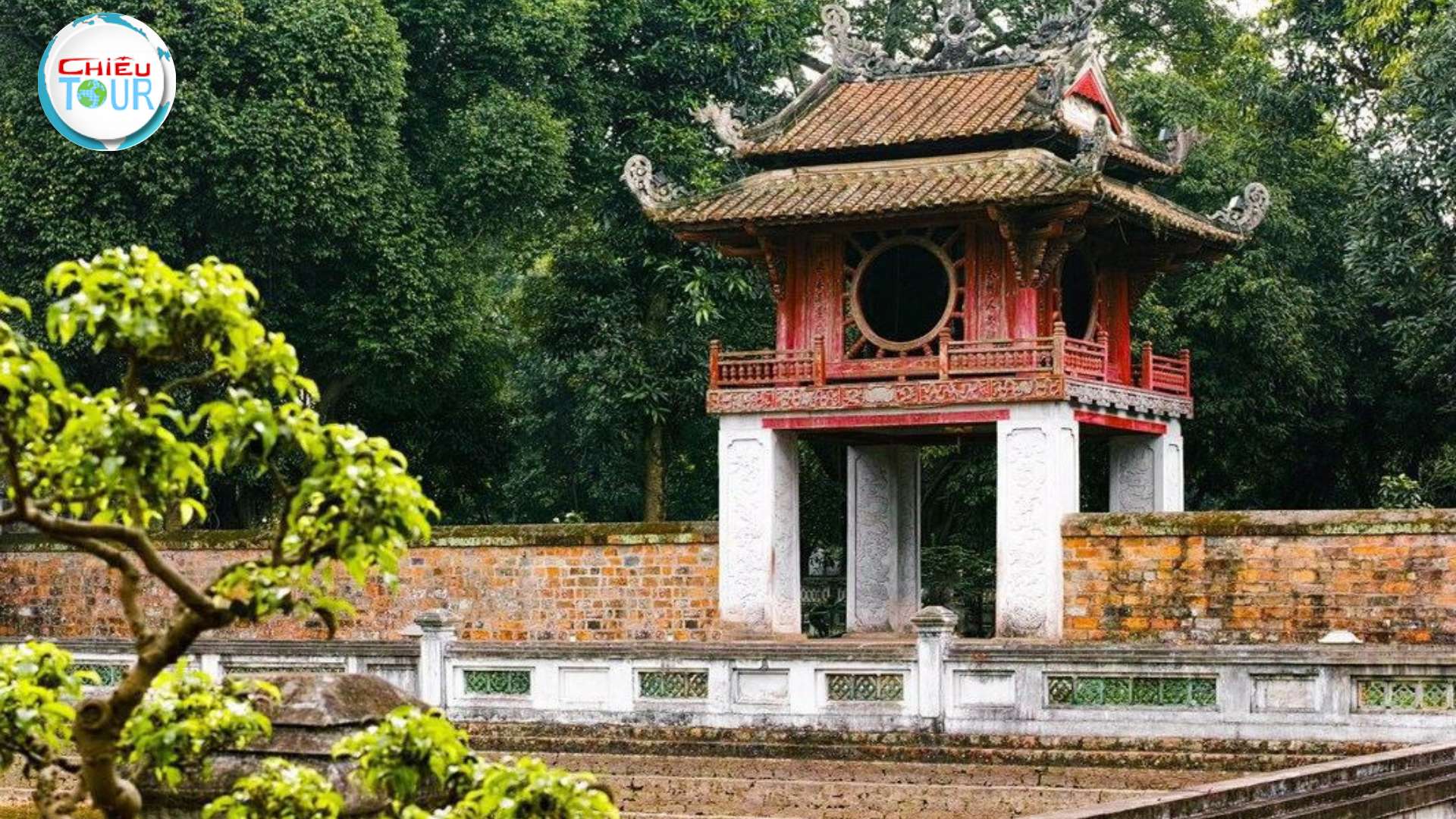
Cultural Importance
The Temple of Literature is dedicated to Confucius, reflecting the Confucian values that have shaped Vietnam's educational system for centuries. Every year, thousands of students come to pray for academic success during the examination season, acknowledging the temple's role in promoting intellectual pursuits.
Architectural Beauty
Văn Miếu Quốc Tử Giám features five courtyards leading to a beautiful main hall, adorned with intricate carvings and ornate decorations. The serene atmosphere is enhanced by the presence of ancient trees, stone tablets carved with the names of successful scholars, and tranquil ponds. Each corner of the temple tells a story, inviting visitors to immerse themselves in the rich scholarly tradition of Vietnam.
Engaging Activities
While exploring the temple grounds, you can participate in various activities, including calligraphy demonstrations and traditional performances. These experiences not only deepen your understanding of Vietnamese culture but also allow you to engage with local artists and craftsmen. Don’t forget to purchase a few souvenirs that reflect the essence of this cultural hub.
Thang Long Imperial Citadel
Recognized as a UNESCO World Heritage Site, the Thang Long Imperial Citadel serves as a historical treasure trove representing the evolution of Hanoi over a millennium. Once the center of Vietnamese power, this citadel is a must-visit for anyone eager to understand Vietnam's imperial history.

Historical Background
The citadel was constructed in the 11th century under the Ly Dynasty and has undergone numerous modifications throughout the years. It served as the royal palace until the 19th century and played a pivotal role during the resistance against foreign invasions.
Architectural Marvel
Visitors will find that the layout of the citadel showcases a blend of traditional Vietnamese and Chinese architectural styles. The remnants of ancient walls, gates, and palaces evoke the grandeur of a bygone era. The archeological site within the citadel reveals artifacts dating back to different dynasties, allowing for a deeper appreciation of Vietnam's rich heritage.
Exploration Opportunities
Exploring the Thang Long Imperial Citadel offers a chance to step back in time. Guided tours provide fascinating insights into the lives of royalty, military strategies, and the architectural brilliance of the period. Additionally, the nearby Flag Tower stands tall as a symbol of Vietnamese independence, providing a stunning backdrop for photography enthusiasts.
See more: THANG LONG IMPERIAL CITADEL - A HISTORICAL CAPITAL FOR ALL TIME
Hoan Kiem Lake
Hoan Kiem Lake, often referred to as the "Lake of the Returned Sword," is the heart of Hanoi and a gathering place for locals and tourists alike. Surrounded by bustling streets and historic landmarks, this picturesque lake is steeped in folklore and natural beauty.

Legend and Mythology
According to legend, the lake was once a place where Emperor Lê Lợi received a magical sword from a turtle god to defeat foreign invaders. After his victory, he returned the sword to the lake, hence its name. This story is an integral part of Hanoi's cultural identity, making the lake a significant site for both reflection and storytelling.
Scenic Beauty
The tranquility of Hoan Kiem Lake contrasts beautifully with the urban hustle surrounding it. Visitors can enjoy leisurely walks along the lakeside promenade, surrounded by vibrant street vendors and charming cafés. The iconic Turtle Tower, situated on an island in the lake, offers a striking visual element and is a popular spot for photography.
Recreational Activities
In addition to strolling around the lake, visitors can partake in various recreational activities. Tai chi classes take place early in the morning, showcasing the city's commitment to health and wellness. The nearby Ngọc Sơn Temple offers a spiritual retreat, where you can learn about the significance of this sacred site.
See more: Hoan Kiem Lake (Sword Lake)
Tran Quoc Pagoda
As the oldest pagoda in Hanoi, Tran Quoc Pagoda holds immense spiritual significance and is a prominent symbol of Buddhism in Vietnam. Situated on the banks of West Lake, this enchanting temple offers a peaceful escape from the city's bustle.

Historical Context
Founded during the 6th century, Tran Quoc Pagoda has played a vital role in the propagation of Buddhism throughout Vietnam. Originally located on the Red River, it was relocated to its present site in the 17th century to ensure its preservation.
Architectural Splendor
The pagoda boasts a unique octagonal structure with ten stories, each adorned with elaborate sculptures and Buddhist motifs. The tranquil surroundings, coupled with the rhythmic sound of chanting monks, create an atmosphere conducive to contemplation and spiritual reflection. Visitors can also admire the impressive statue of the Bodhisattva Avalokiteshvara, embodying compassion and mercy.
Visitors' Experience
Walking through the ornate entrance gate, visitors are greeted by lush gardens and serene lotus ponds, enhancing the spiritual ambiance. The pagoda is open to all, encouraging individuals from diverse backgrounds to appreciate its beauty and learn about Buddhist teachings. Whether you're seeking solace or enlightenment, Tran Quoc Pagoda provides a welcoming space for introspection.
See more: Tran Quoc Pagoda - A Famous Spiritual Tourism Destination in Hanoi
Hanoi Old Quarter
The Hanoi Old Quarter is a living museum of history and culture, where narrow streets teem with activity and vibrancy. With its colonial architecture, street markets, and traditional crafts, the Old Quarter transports visitors back in time.

Historical Significance
Once a bustling trading hub in the 13th century, the Old Quarter has retained much of its original charm. Each street was historically dedicated to a specific trade, and today it continues to thrive as a marketplace filled with artisanal shops and food stalls.
Cultural Experiences
Wandering through the labyrinthine alleys, visitors can indulge in an array of culinary delights, from pho to banh mi. Street food tours are highly recommended for those looking to explore the rich flavors of Vietnamese cuisine. Additionally, the area is dotted with historical landmarks, such as the iconic Bach Ma Temple, which dates back to the 11th century.
Engaging with Locals
The Old Quarter is not just a feast for the senses; it’s also an opportunity to connect with the local community. Engaging with artisans, participating in cooking classes, or even trying your hand at traditional crafts fosters a sense of belonging and cultural exchange. The warmth and hospitality of the residents enhance the overall experience, making every interaction memorable.
See more: Sharing experiences exploring Hanoi's Old Quarter
Duong Lam Ancient Village
Located a short drive from Hanoi, Duong Lam Ancient Village offers a glimpse into rural life and Vietnam's agrarian past. Known for its well-preserved traditional houses and rich history, this village is a haven for those seeking authenticity away from the urban landscape.
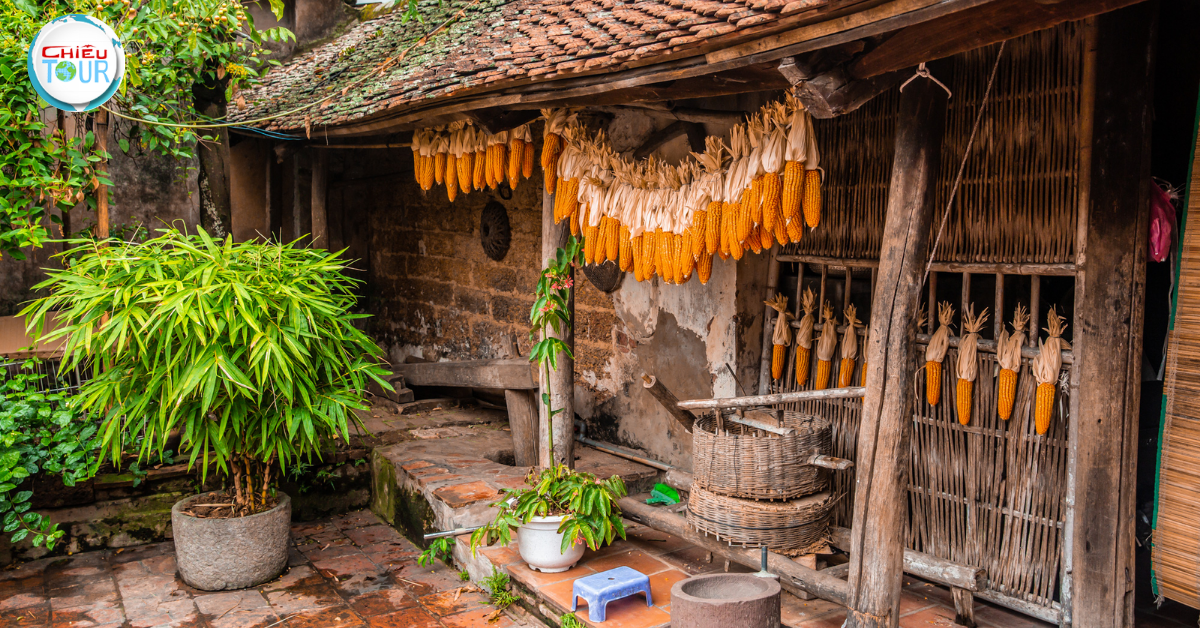
Historical and Cultural Roots
Duong Lam is believed to be the birthplace of two kings from the early Lý dynasty. This historical significance adds depth to the village's charm, making it an essential stop for history enthusiasts. The village features ancient houses made from laterite bricks, many of which have stood the test of time.
Exploring Traditional Architecture
Visitors can wander through the narrow lanes, admiring the timeless architecture that showcases the unique style of northern Vietnamese villages. Many homes have been converted into small museums, offering insights into traditional customs, farming practices, and local craftsmanship. The village's peaceful atmosphere encourages visitors to slow down and savor the moment.
Local Experiences
Interacting with locals is one of the highlights of visiting Duong Lam. Engaging in rice farming activities, learning how to make traditional dishes, or simply sharing stories with villagers can lead to enriching experiences. The annual festivals, celebrating local traditions and agricultural practices, provide an excellent opportunity to witness the village's vibrant culture first-hand.
See more: Duong Lam Ancient Village - Rich in the Beauty of the Northern Countryside in Hanoi
Hoa Lo Prison
Often referred to as the "Hanoi Hilton," Hoa Lo Prison is a poignant reminder of Vietnam's tumultuous history. Originally built by the French colonialists in the late 19th century, it served as a detention facility for political prisoners and later for American POWs during the Vietnam War.

Historical Context
Hoa Lo Prison has witnessed countless stories of resilience and sacrifice. Its walls echo the struggles of those who fought for Vietnam's independence and the harsh conditions they endured. Today, it stands as a memorial, educating visitors about the country's complex past.
Exhibits and Artifacts
A visit to Hoa Lo Prison offers a sobering yet enlightening experience. The museum showcases a collection of photographs, documents, and personal items that tell the stories of prisoners who were held there. Guided tours provide valuable insights, allowing visitors to grasp the broader implications of Vietnam's fight for freedom.
Reflective Experience
For many, visiting Hoa Lo Prison is a deeply emotional experience. The grim atmosphere evokes feelings of empathy and understanding as one contemplates the sacrifices made for liberty. It serves as a reminder of the resilience of the Vietnamese people and their unwavering spirit during difficult times.
See more: The Hỏa Lò Prison in Hanoi
Hanoi Water Puppet Show
The Hanoi Water Puppet Show is a unique cultural performance that has captivated audiences for generations. Originating from the rural rice paddies of northern Vietnam, this age-old art form combines music, puppetry, and storytelling, offering an enchanting experience.
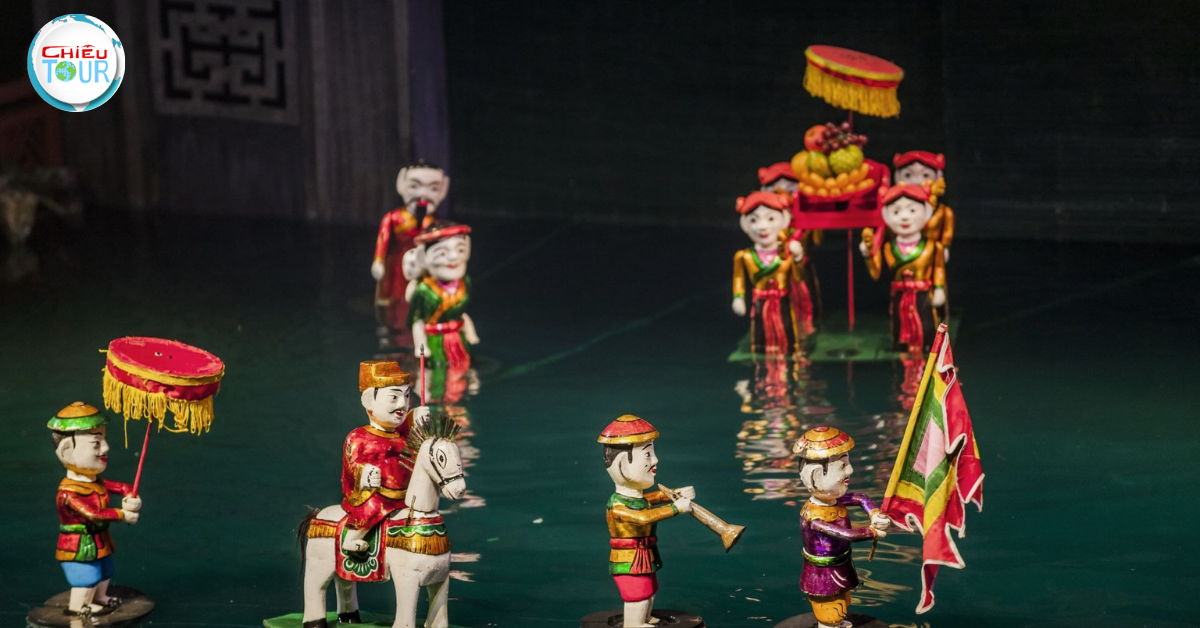
Historical Evolution
Water puppetry dates back to the 11th century when farmers used it as a form of entertainment during festivals. The art form has evolved over the years, transitioning from rural celebrations to a theatrical spectacle enjoyed by international audiences.
Performance Highlights
The shows are performed on a shallow pool of water, where intricately crafted wooden puppets glide gracefully across the surface. Skilled puppeteers control the puppets hidden behind a bamboo screen, bringing to life tales of daily life, folklore, and legends. Accompanied by traditional live music, the performances create a mesmerizing atmosphere that transcends language barriers.
A Cultural Treasure
Attending a water puppet show is a delightful way to immerse oneself in Vietnamese culture. It offers a unique opportunity to appreciate the artistry and creativity behind this traditional form of entertainment. The blend of humor, drama, and vibrant colors leaves a lasting impression on both locals and visitors alike.
See more: Water Puppet Theater: A Cultural Specialty in Hanoi for Foreign Visitors
Walking Street in the Old Quarter of Hanoi
Every weekend, the streets of Hanoi come alive as they transform into a pedestrian-only zone, inviting locals and tourists to explore without the hustle and bustle of traffic. The Walking Street in the Old Quarter is a vibrant celebration of culture, food, and community.
Weekend Festivities
On weekends, the streets are filled with performers, artists, and food vendors. Street musicians play enchanting melodies while dancers showcase traditional Vietnamese folk dances. The lively atmosphere creates a sense of camaraderie among visitors and locals, fostering connections and cultural exchange.
Culinary Delights
The Walking Street is a food lover's paradise. Street food stalls offer an array of delectable dishes, from crispy spring rolls to grilled skewers. Sampling local delicacies while wandering through the festive environment is an experience that tantalizes the taste buds and introduces visitors to the richness of Vietnamese cuisine.
Engaging Activities
Throughout the evening, various interactive activities are organized, including traditional games and workshops. Visitors can join in the fun by participating in folk games or learning to make crafts alongside local artisans. This hands-on approach enhances the overall experience, allowing everyone to leave with a newfound appreciation for Vietnamese culture.
Conclusion
Hanoi, with its rich tapestry of history, culture, and traditions, offers countless experiences for travelers exploring the Top 10 Famous Tourist Attractions in Hanoi. Each destination presents an opportunity to connect with the local culture and history, providing insights into the Vietnamese way of life. Whether you’re wandering through the streets of the Old Quarter, reflecting at the serene Hoan Kiem Lake, or immersing yourself in the performances of traditional water puppetry, Hanoi promises a journey filled with discovery and wonder. Embrace the spirit of exploration, and let the magic of Hanoi unfold before you.
 Vietnam
Vietnam 
